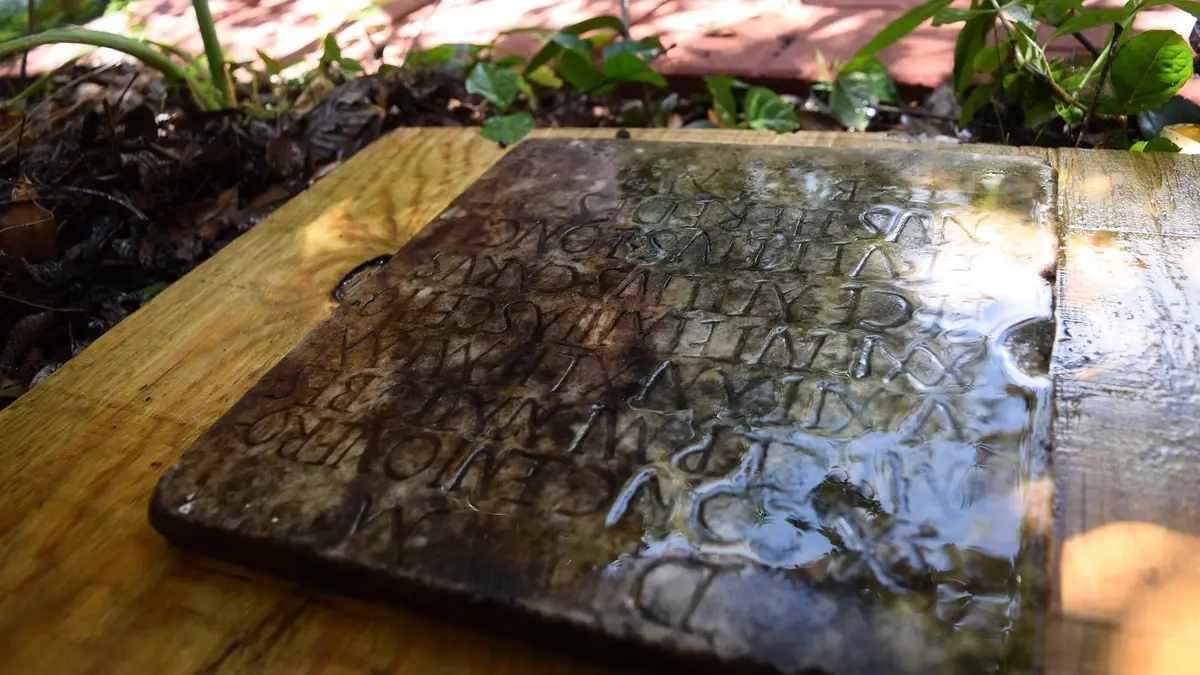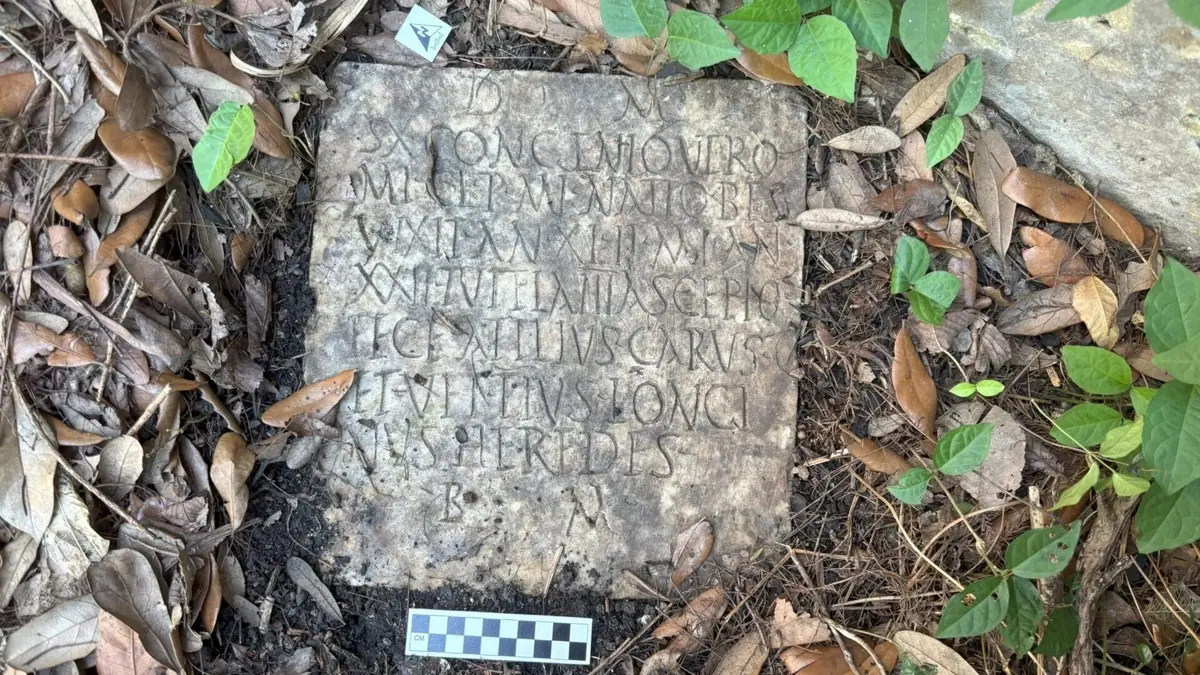 Anthropologist Daniella Santoro from Tulane University and her husband Aaron Lorenz were working in their yard in the historic Carrollton neighborhood of New Orleans when something unusual emerged from the underbrush. It was a marble tablet measuring 30 centimeters wide, belonging to the grave of a Roman soldier who lived on the other side of the world in the 2nd century.
Anthropologist Daniella Santoro from Tulane University and her husband Aaron Lorenz were working in their yard in the historic Carrollton neighborhood of New Orleans when something unusual emerged from the underbrush. It was a marble tablet measuring 30 centimeters wide, belonging to the grave of a Roman soldier who lived on the other side of the world in the 2nd century.
An expert analysis confirmed the authenticity of the artifact, which likely crossed the ocean during World War II.
“We often receive calls from people about strange finds in their yards in this area,” said D. Ryan Gray, an archaeologist at the University of New Orleans, in an interview with Live Science, who studied the tombstone.
“When Daniella first described it, I thought it was a 19th-century gravestone found in a cemetery in New Orleans and then discarded. But when I saw the photo of the inscription, I immediately suspected it was something entirely different,” the archaeologist said.
The text on the marble tablet contained some information about the buried individual. According to expert translations, this was Sextus Congenius Verus, “a sailor of the Praetorian fleet of Misenum.” He was born in Thrace, in northern Greece, lived for 42 years, and spent 22 of those years serving on a Roman warship.

How Did the Tombstone End Up in New Orleans?
Investigations revealed that this inscription had previously been documented by on a 2nd-century tombstone found near the town of Civitavecchia—an ancient port located 64 kilometers northwest of Rome. At one time, the artifact was part of a museum collection. During World War II, the museum was bombed, and the tombstone disappeared.
It’s not entirely clear what happened at that time. However, Gray proposed several theories about the sequence of events. It’s possible that an American soldier, after the Allies liberated in 1944, passed through Civitavecchia and bought the tablet as a souvenir. Alternatively, it may have been purchased by an antique dealer after the war and then sold to a tourist. Regardless, the couple who discovered the slab is now working to return the tombstone to Civitavecchia as soon as possible.
“While we may never know how the tombstone of Sextus Congenius Verus ended up in New Orleans, we do know for certain that this artifact is now safe and on its way back to where it will be properly displayed,” Gray wrote in his report.
